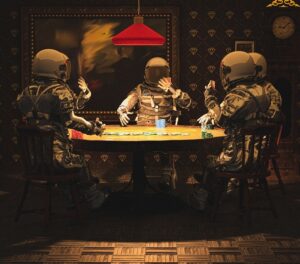Blackjack is one of the most popular casino games, drawing in players who enjoy both its simplicity and the opportunity to apply strategic thinking. However, over time, several myths have emerged around the game, leading players to believe in “guaranteed” strategies for success. For those who wish to explore this game on flexible platforms, casinos not on Gamstop offer a variety of blackjack options, where players can freely test their skills and strategies. In this post, we’ll delve into some common blackjack myths and reveal the reality behind each one, helping players make smarter choices at the table.

Myth #1: Always Assume the Dealer Has a 10
One common belief among blackjack players is that the dealer’s hidden card, or “hole card,” is always a 10. This assumption leads players to make decisions based on the idea that the dealer has a high probability of holding a strong hand. However, while there are more 10-value cards (10, Jack, Queen, King) in a deck than any other single value, this doesn’t mean it’s always true.
Reality: Statistically, only around 30% of the deck is made up of 10-value cards, which means the dealer is less likely than players think to have a 10 in the hole. Relying on this assumption can lead to misguided decisions. Instead, players should use basic blackjack strategy, which provides guidance based on probabilities and actual game data rather than myths.
Myth #2: Always Split Aces and Eights
It’s commonly advised to always split aces and eights in blackjack. The reasoning behind this is that a pair of eights totals 16, a notoriously weak hand, while splitting aces can lead to two strong hands of 21. Although this advice is generally solid, it’s important to understand why.
Reality: While splitting aces and eights is a good move most of the time, it doesn’t always apply in every situation. For example, in some variations of blackjack, the rules limit what you can do after splitting aces (such as only allowing one additional card per hand). These limitations can reduce your odds of success. Additionally, when the dealer has a strong upcard (such as a 9, 10, or Ace), the risk of losing both hands is higher. Understanding the context of the game rules and the dealer’s upcard can help make a more informed decision.
Myth #3: Avoid Sitting at Tables with New Decks
Some players believe that when a fresh deck is introduced, it disrupts their streak and increases the randomness, so they should avoid playing immediately after a reshuffle. The idea is that players may lose their “flow” due to the new order of cards.
Reality: Blackjack is a game of probability, and reshuffling does not affect the randomness or outcomes of individual hands. Every card dealt is independent of the previous ones. In fact, many casinos reshuffle frequently precisely to keep the game fair and prevent any card-counting. Sticking with basic strategy rather than focusing on superstitions is the best way to improve your chances.
Myth #4: Card Counting Guarantees Wins
Thanks to movies and pop culture, many players think that card counting is a foolproof way to beat the casino at blackjack. While card counting can, in theory, give players a slight advantage, it’s far from a guaranteed way to win consistently.
Reality: Card counting is complex and requires intense focus, plus it’s often ineffective in casinos where multiple decks are used and reshuffling is frequent. Moreover, casinos have strict measures to detect and prevent card counting. It can be a useful tool in certain conditions, but for most players, following a solid basic strategy will offer better and more consistent results.

Final Thoughts
Blackjack strategies are often surrounded by myths that can mislead players. Understanding the reality behind these myths is essential for making smarter decisions at the table. Whether playing in traditional casinos or in casinos not on Gamstop, it’s crucial to rely on proven strategies rather than misconceptions. Knowing when to split, stand, or hit based on probability, rather than myths, will make for a better blackjack experience.












